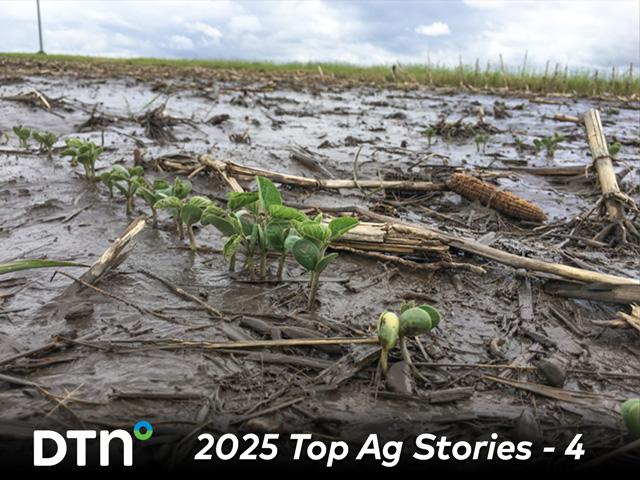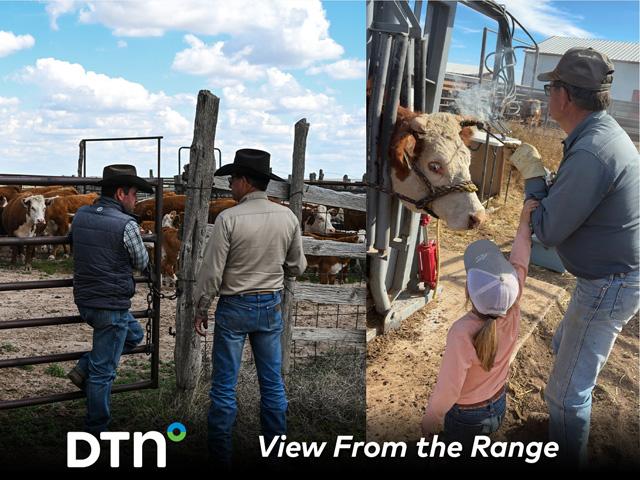Cotton: Made in America
Cotton of the Carolinas
North Carolina's Eric Henry has been swimming against the current for more than 40 years to run a U.S. cotton clothing manufacturing and design label using cotton grown sustainably in the region. In the process, he's established relationships with farmer-suppliers whose operations Henry touts via QR codes on the clothing labels.
The journey for Henry in the textile business began in 1978, when he cofounded a T-shirt company while still a student studying agriculture at North Carolina State University.
"I was looking for a way to make some bucks," says Henry, who, 47 years later, still runs TS Designs along with its retail brand, Solid State Clothing, in Burlington, North Carolina. "There are lots of T-shirts on campuses. I didn't know about shirts or screen printing, but I saw a business opportunity."
Along with then partner Tom Sineath (the "TS" of TS Designs), the company thrived. They had more than 120 employees during the 1980s and were printing shirts for Nike, Adidas and The Gap, among others. "We were Nike's third biggest screen printer," Henry explains.
A BIG CHANGE
Then, the North American Free Trade Agreement (NAFTA) became law in 1994. NAFTA opened trade between the U.S., Canada and Mexico. Within a few years, TS Designs had only 12 employees.
"The brands could not get out of the country quick enough," Henry recalls.
But, Henry and Sineath never gave up, based in part on their interest in agriculture, sustainable farming and a future for the business that relies on enough consumer interest to buy a local product with a transparent supply chain. (Henry bought out his partner seven years ago, but Sineath remains a contract employee for special projects).
"I realized then there was more to the business than the bottom line," Henry says. "What we could do is create high quality and be environmentally responsible."
NORTH CAROLINA GROWN
Enter farmers Ronnie Burleson and son, Andrew, of Richfield, North Carolina. They have been working with Henry for 17 years, selling him a small portion of the cotton they grow on their 4,300-acre farm in the state's central-Piedmont region. Henry had initially approached them about being a supplier.
P[L1] D[0x0] M[300x250] OOP[F] ADUNIT[] T[]
"Eric's worked hard to put all the pieces together by trying to do everything in North Carolina," Andrew says. "He's not just about the bottom line, he's trying to support jobs here."
To be sure, the Burlesons will only sell about 40 bales to Henry per year out of the 5,000 to 6,000 they produce. But, they like the connection created between themselves and the eventual consumer. A scan of the QR code imprinted on the label of a TS Designs T-shirt will take you online, where you can see a photo of the Burlesons, the gin nearby where the cotton was processed, the spinner that turned the cotton to thread and the TS Designs shop where white T-shirts are dyed and imprinted.
The Burlesons do receive a premium (they declined to disclose the amount) for the cotton they sell to TS Designs, but it wouldn't be considered eye-popping. "This is definitely a better product," he says of TS Designs' T-shirt brand, Cotton of the Carolinas. "The premium isn't a drastic difference from a market price. I do think we're creating value, and this takes time, and this is worth something."
In addition to the proximity to his printing and dying facility, the Burlesons could offer Henry a long history of sustainable farming. Ronnie's father, Thurman, began using no-till in the 1960s. "My dad was trying to keep the topsoil in the fields and not at the creek," Ronnie says. To this day, the farm's official name is Thurman Burleson and Sons Farms.
Initially, Henry broached the subject of the cotton being grown organically. "That didn't work for us in our operation or our rotations," Andrew explains.
"We imported organic cotton yarn for a time," Henry says. "We got a nice piece of paper with it, but we didn't know the farmer or the source of the cotton, and honestly, we didn't trust it." In the end, Henry most wanted reliable cotton suppliers in the region who were operating sustainably.
COTTON RETURNS TO REGION
In the Burlesons, he had found a family that was instrumental in bringing cotton farming back to the state's Piedmont region in the 1990s. The family, along with 27 other area farmers, established Rolling Hills Gin at New London in 1996. The gin is one of the entities highlighted as part of the shirt's supply chain through a QR code printed in the neck label of the Cotton of the Carolinas and Solid State Clothing's T-shirts.
Like Henry, the Burlesons have negotiated their own obstacles in business. Cotton-growing had been abandoned in the region by 1960, in large part due to the boll weevil. The family turned to growing grain and managed to get through the 1980s economic downturn.
"We had survived the '80s money crunch," Ronnie says, "but we didn't have any money." In 1991, cotton prices were high compared to grain, he adds. "My brother (Dennis) and I decided that we know cotton can be grown here, so we were going to try. I was 40 years old and had never been in a cotton field," Ronnie says. The Boll Weevil Eradication Program had begun in North Carolina in 1987, and by 1991, the pest was not a factor.
They grew about 300 acres in 1991 and ratcheted up over time. They now grow more than 2,200 acres of cotton. Within a few years of their return to the crop, several other farmers expressed a desire to grow cotton, too. The increased interest led to the formation of Rolling Hills Gin. Prior to that, the Burlesons had to truck their cotton to a gin 90 miles away.
INDUSTRY CHANGES
Textile mills have been on the decline since the middle of the past century. Employment in the business peaked in 1948, according to the U.S. Bureau of Labor Statistics, with 1.3 million jobs. In the 1980s and '90s, as discount chains like Walmart and Kmart began demanding lower prices, manufacturers looked overseas to reduce costs.
NAFTA caused a large shift in manufacturing jobs to Mexico (and later to other countries like Vietnam and Bangladesh) because of lower labor costs. It increased overall trade of textile goods within North America but caused U.S. companies to outsource garment assembly to Mexico while still producing yarns and fabrics domestically.
A second hit came in 2001 when China was admitted to the World Trade Organization (WTO). That created markets for Chinese products. Exports from China overseas -- and to the U.S. -- surged by factors of more than 1,000%.
"The industry has always chased cheap labor," says Gregg Woodcock, executive director of the American Association of Textile Chemists and Colorists (AATCC). The industry moved from England to New England in the late 1700s then shifted to the Mid-Atlantic states and the Deep South in the 1800s, then out of the U.S. in the 1900s.
"The textile industry will come back to the U.S. when the labor is the cheapest again," Woodcock explains. "The U.S.'s Southern states have the perfect climate for growing cotton. You can make the raw material here, and the supply chain can be efficiently built around that; but it only works if the cost is low."
Producing clothing "sustainably" in the U.S. is a great goal, Woodcock says, but the market for the vast majority of people is price sensitive. Someone might be able to buy a $200 shirt because they support the idea of domestic sustainability, but many more people seek a shirt that's close to $5.
In 2024, there were about 100 U.S. textile mills processing the least amount of cotton here in 139 years. There were still about 163,000 people employed in the U.S. textile mill industry in 2023. Cotton exports declined last year for the fourth year in a row.
The future is unpredictable, and the Burlesons know change is inevitable. "We're always looking for the next thing," Andrew says, "but just keeping our heads above water is a full-time job."
Going forward, Henry says their company will continue to focus on natural fiber products as well as their own natural dyes made from material such as black walnuts. Many synthetic dyes are made overseas and are fossil fuel-based. He feels they are well-positioned in a consumer market that is more concerned about microplastics in materials -- including polyester fibers.
"We do like that more people are getting excited about 'Made in the USA,'" he says.
**
-- For More Information, visit https://www.tsdesigns.com/…
[PF_0425]
(c) Copyright 2025 DTN, LLC. All rights reserved.




